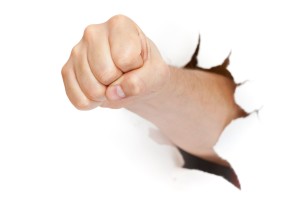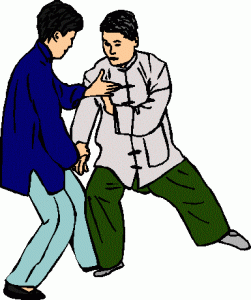 “Golden Rules” conjure thoughts of god-like laws not to be broken by man or beast; rules mandated and written in granite for all eternity. Rules that if broken could destroy man’s relationship with nature and reap havoc on the universe. Rules followed by all saintly men or visionaries.
“Golden Rules” conjure thoughts of god-like laws not to be broken by man or beast; rules mandated and written in granite for all eternity. Rules that if broken could destroy man’s relationship with nature and reap havoc on the universe. Rules followed by all saintly men or visionaries.
Styles of Chinese martial arts have basic rules that few students see. Their thoughts are concerned with the basic technique or flavor (southern or northern) of a style. They seldom spot the similarities but are quick to point out the differences. These similarities represent the foundation of all Chinese martial arts without these beams of support; the style becomes ineffective. If students comprehend these rules, their basic understanding and skill level improves. They notice their techniques and can make improvements and updates as they progress. They can also spot Kung Fu that is less than satisfactory; something that few students see.
Instead of being awed by fancy maneuvers or skilled talkers, they can see and ask the proper questions to explore the truth or lie of a system. These same rules apply whether you do Tai Chi or Kung Fu.
Rule # 1 – Step before you Strike
Stepping and striking or blocking is the number one Golden rule of Kung Fu that is the easiest to do and easiest to understand, but that many students fail to do. As implied in the description, always step first into an excellent stable posture and then execute your technique. Stances are how you generate power and maintain balance. For example, if you were going to push a car, the first thing that you would do is get down into a deep posture and place your hands on the car and as you push forward with your hands maintain your root on the floor.
For Tai Chi, you have to make sure that you shift your weight off of a foot before you move it, and place it flat with no weight on it before you shift weight on to it.
 Rule # 2 – Power
Rule # 2 – Power
Power in Kung Fu means explosive force at the end of a striking or blocking technique. This simple concept sometimes becomes misinterpreted as strength. Martial artists then lift weights to increase their strength and, they believe, increase their power. Power is the focus of the body’s energy on a specific point, the smaller the point… the more power. For example, the sun is a dominant force but does us little harm. However, if we focused the sun’s energy through a magnifying glass to a small point, we can create extreme heat and fire. Power in Kung Fu technique requires speed, flexibility, concentration, pin-point accuracy, and full body cooperation.
Power is a product of the time it takes to transmit energy, not the strength or mass of an object. The muscles require elasticity to accomplish the task. Power comes from longer or more flexible the muscles. If I have a brand new rubber band that is average in size with excellent elasticity, and pull back one end and then let go to snap the rubber band, it generates a lot of power. But suppose I have another rubber band, thick and not very flexible. When I pull on the rubber band, it won’t be as far, and my forward snap carries less power.
When a Kung Fu practitioner executes a technique, transmission of energy occurs. Transfer of power occurs in three forms: circular transmission, direct transmission, or angular transmission.
 Rule # 3 – Waist
Rule # 3 – Waist
The waist is the master of the body. It controls the coordination between the upper and lower halves of the body. Without proper waist control and cooperation, no practitioner can develop good power, balance, or speed. Power starts at the soles of the feet, travels through the legs, and follows the direction of the waist. If the waist misdirects the energy, it will never reach the arms and become expressed through the hands.
There are two types of waist rotation: positive or negative. Positive rotation rotates the hip in the direction of the strike, while negative rotation rotates the hip in the opposite direction of the strike. Both of these change the direction of how the power flows through the body and to the hands.